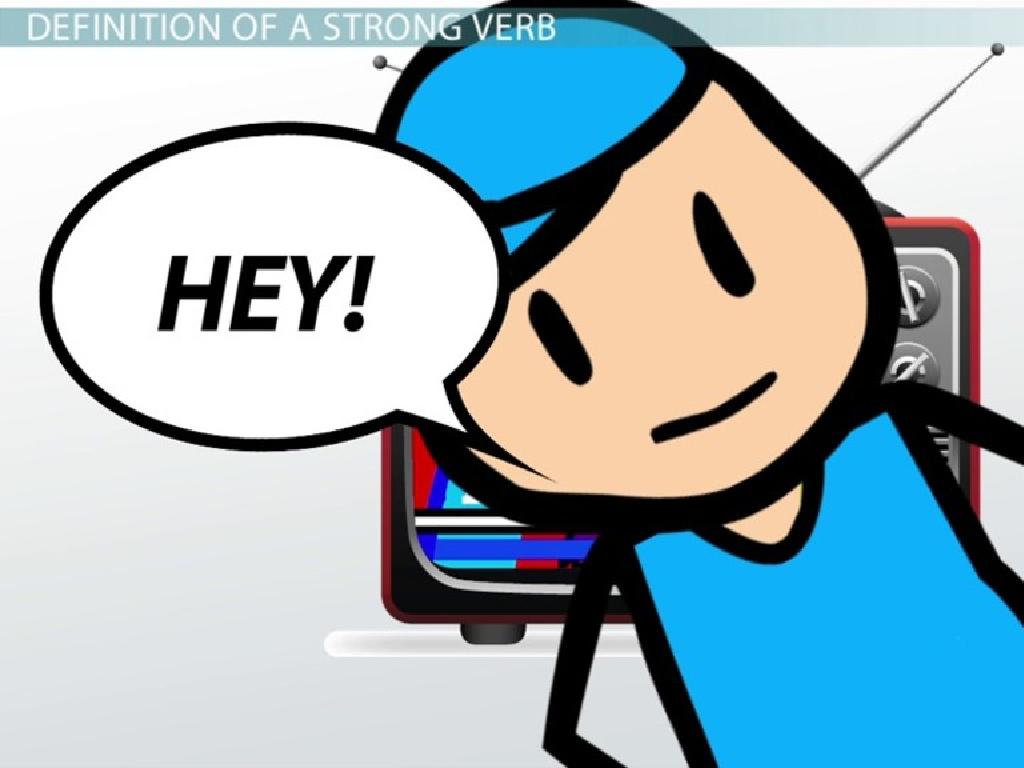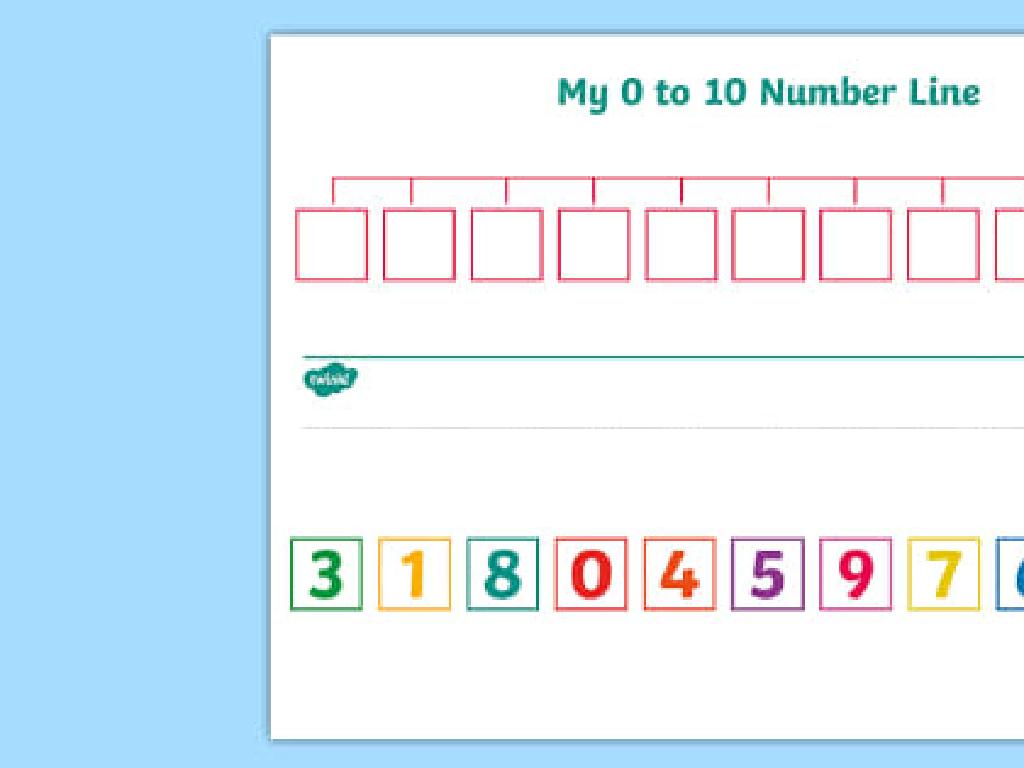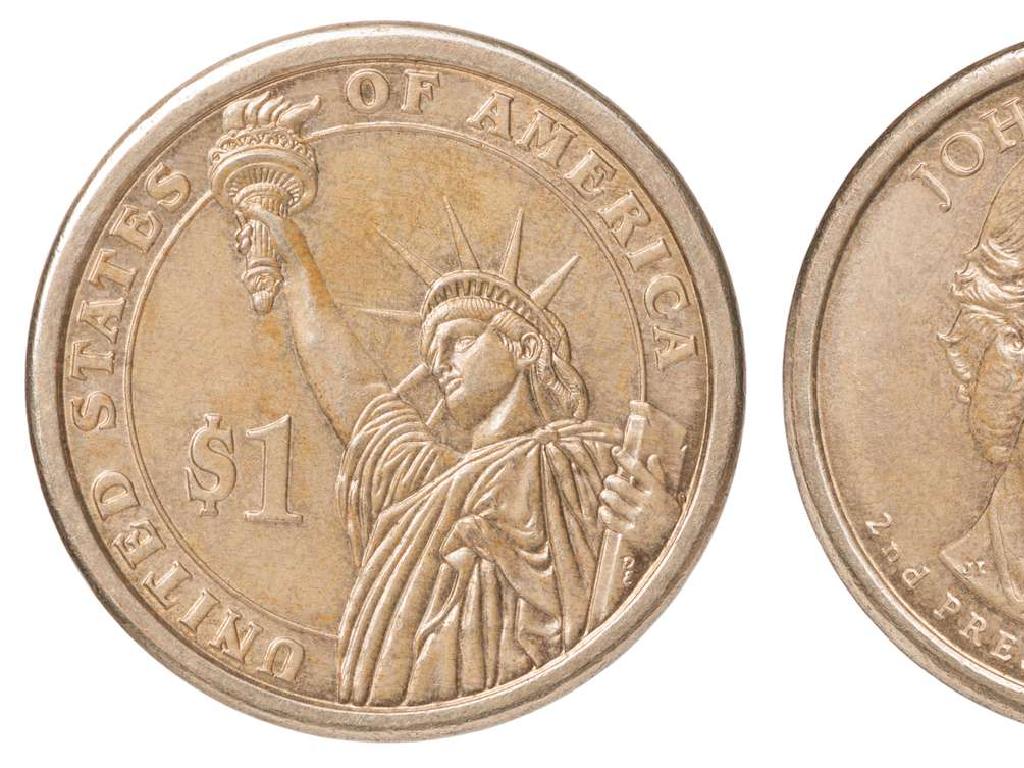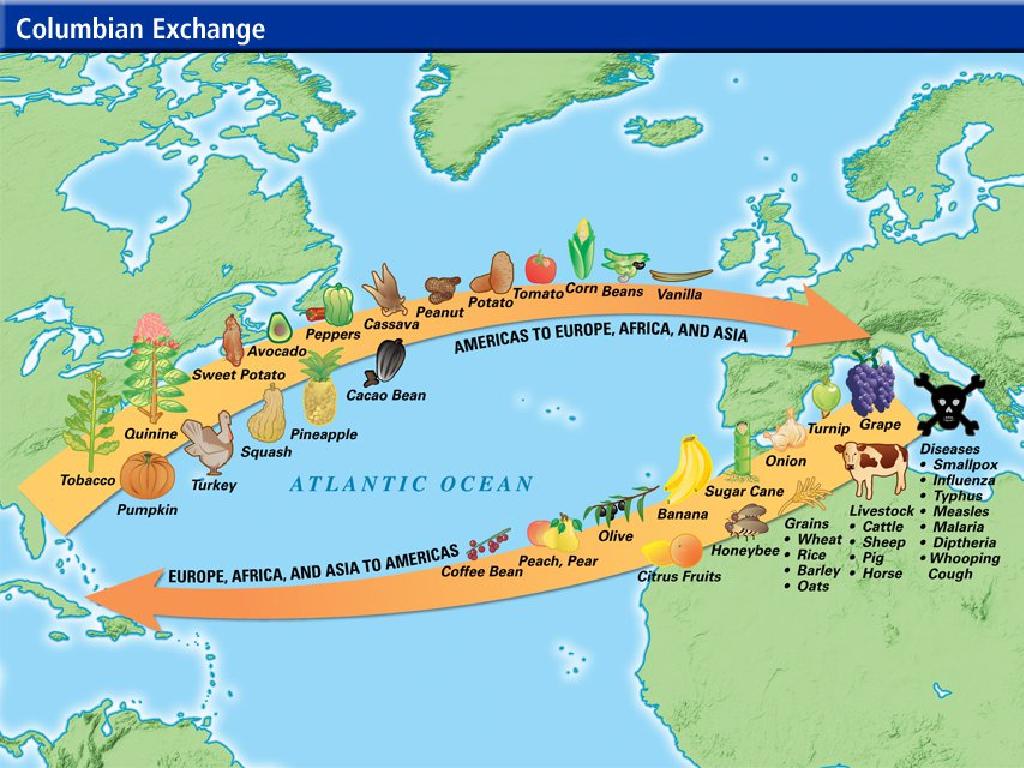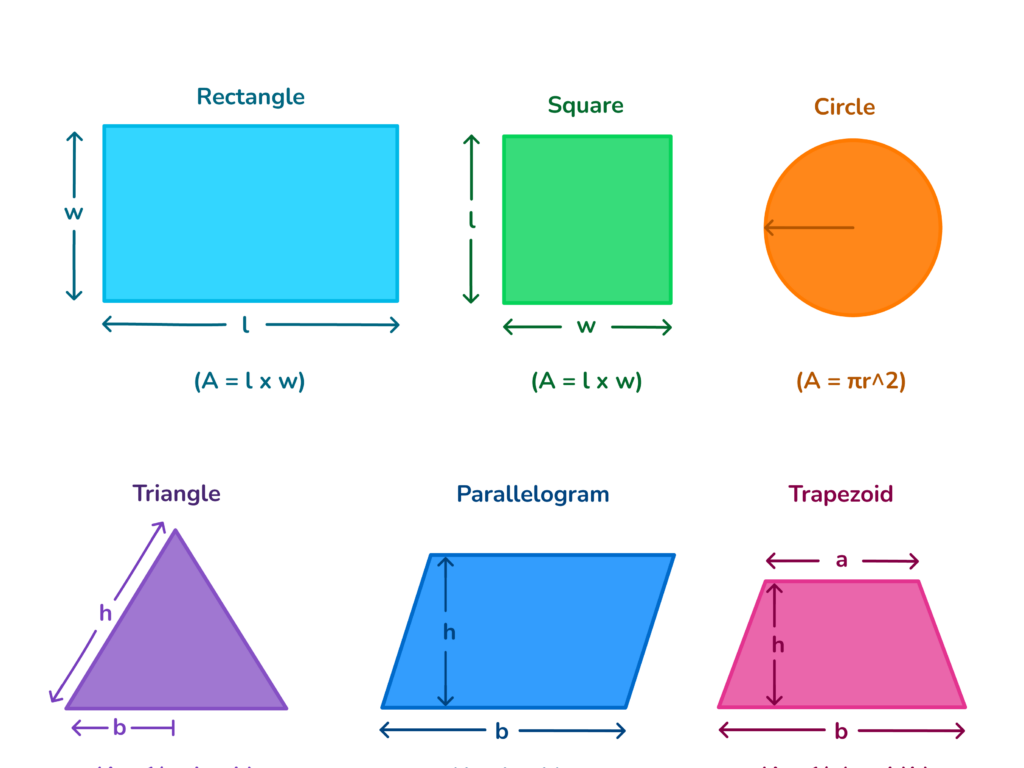Follow Directions On A Coordinate Plane
Subject: Math
Grade: Sixth grade
Topic: Coordinate Plane
Please LOG IN to download the presentation. Access is available to registered users only.
View More Content
Navigating the Coordinate Plane
– Understanding the Coordinate Plane
– A two-dimensional surface with horizontal (x-axis) and vertical (y-axis) lines
– Directions in Math
– Knowing how to move up, down, left, right is crucial for locating points
– Real-life Coordinate Use
– Used in maps, video games, and architecture to plot positions
– Activity: Plot the Course
– Use given coordinates to plot a path on a plane
|
This slide introduces students to the basics of the coordinate plane, which is an essential concept in mathematics, particularly in geometry and algebra. The coordinate plane allows us to precisely locate and plot points using a pair of numbers, known as coordinates. Understanding how to navigate the plane using directions is fundamental for students, as it applies to various real-life situations such as navigation, computer graphics, and engineering. To reinforce this concept, engage students in an activity where they plot a course on a coordinate plane using a set of given coordinates. This hands-on activity will help solidify their understanding of how the coordinate plane works and its practical applications.
Exploring the Coordinate Plane
– Define a coordinate plane
– A flat surface with two number lines: horizontal (x-axis) and vertical (y-axis)
– Understand the x-axis and y-axis
– The x-axis is horizontal, y-axis is vertical. They intersect at the origin (0,0)
– Learn about the four quadrants
– Quadrants are four sections made by the axes, labeled I to IV starting from top right and moving counter-clockwise
– Applying coordinates to plot points
– Use (x, y) format to locate points. Example: (3, 2) is in Quadrant I
|
This slide introduces students to the fundamental concept of the coordinate plane in mathematics. Begin by defining the coordinate plane as a two-dimensional surface formed by the intersection of two perpendicular number lines, the x-axis, and the y-axis. Explain that the point of intersection is called the origin. Discuss the four quadrants of the coordinate plane, how they are labeled, and their significance. Emphasize that every point on the plane is represented by an ordered pair of numbers known as coordinates. Provide examples of plotting points in different quadrants to solidify understanding. Encourage students to practice by plotting given points and identifying the quadrant they fall into.
Plotting Points on a Coordinate Plane
– Plotting a point (x, y)
– Locate the x-coordinate on the horizontal axis, then the y-coordinate on the vertical axis.
– Let’s practice plotting points
– We’ll plot points as a class to reinforce learning.
– Determine each point’s quadrant
– Each point lies in one of four quadrants or on the axes.
– Understanding axes and origin
|
This slide introduces students to the basics of plotting points on a coordinate plane. Start by explaining the coordinate system, where each point is defined by an x (horizontal) and y (vertical) coordinate. Use a clear diagram of a coordinate plane to demonstrate. Practice plotting points as a class to ensure understanding; use simple coordinates to begin with. Discuss the four quadrants of the coordinate plane and how they are determined by the signs of the x and y coordinates. Emphasize the importance of starting at the origin (0,0) and moving along the axes to find the correct location for each point. Provide examples of points in different quadrants and on the axes to illustrate. This foundational skill will be crucial for future lessons on graphing equations and interpreting data.
Navigating the Coordinate Plane
– Move from a point: up, down, left, right
– Starting at (x, y), moving up increases y, down decreases y, right increases x, left decreases x.
– Count units between points
– Measure the distance by counting the grid units between two points.
– Horizontal vs. vertical movements
– Horizontal movements change the x-coordinate, vertical movements change the y-coordinate.
– Practice with coordinate directions
– Use a game or a map activity to apply these movements on a plane.
|
This slide introduces students to the basics of navigating a coordinate plane. Emphasize the importance of starting from a known point and moving in the cardinal directions. Reinforce the concept that moving horizontally changes the x-coordinate while moving vertically changes the y-coordinate. Provide examples such as moving from (2,3) to (2,5) means moving up 2 units. Encourage students to practice by counting the units between points on graph paper. Include an interactive activity where students can practice plotting points and moving between them on a coordinate grid, such as a treasure hunt game or navigating a map to solidify their understanding.
Following Directions on a Coordinate Plane
– Learn to read directional instructions
– Example: Navigate from (2, 3)
– Starting point at coordinates (2, 3)
– Move 4 units up, 5 units left
– From (2, 3) to (2, 7), then to (-3, 7)
– Practice with guided examples
– Work through examples as a class
|
This slide introduces students to the concept of following directions on a coordinate plane, which is a fundamental skill in understanding graphing and geometry. Begin by explaining how to read directional instructions, such as ‘move up’ meaning to increase the y-value, and ‘move left’ meaning to decrease the x-value. Use the example provided to demonstrate these movements on the plane, starting at point (2, 3), moving up 4 units to (2, 7), and then 5 units to the left to (-3, 7). After explaining the concept, engage the class with guided practice examples, ensuring each student follows along and understands each step. Encourage students to ask questions and provide assistance as needed. This hands-on activity will help solidify their understanding of navigating a coordinate plane.
Coordinate Plane Treasure Hunt
– Understand the coordinate plane
– Follow directions to locate treasure
– Use X and Y axes to navigate
– Pair up for clue-solving
– Collaborate with a classmate
– Engage in a fun treasure hunt
– Apply knowledge of coordinates in a game
|
This slide introduces a class activity that combines learning with fun. The Coordinate Plane Treasure Hunt is designed to help students apply their understanding of the coordinate plane in a practical and engaging way. Students will work in pairs, which encourages teamwork and communication. Each pair will receive a set of clues that they must solve by plotting points and following directions on a coordinate grid to find the ‘treasure’. This activity will reinforce their skills in identifying coordinates, understanding the X (horizontal) and Y (vertical) axes, and navigating the four quadrants of the coordinate plane. Prepare different sets of clues to cater to varying levels of difficulty, ensuring that all students are challenged appropriately. The treasure hunt can conclude with a reflection session where students discuss what they learned and how they solved the clues.
Class Activity: Map Creation on Coordinate Plane
– Draw a coordinate plane map
– Add landmarks to your map
Include at least 5 landmarks
– Write directions for a friend
Use coordinates to give directions
– Trade and follow partner’s map
See if you can reach the landmarks using their directions
|
In this engaging class activity, students will apply their knowledge of coordinate planes by creating their own maps. They should draw a grid, label the axes, and plot at least five landmarks. Students will then write a set of directions using coordinate pairs to guide a friend to these landmarks. After completing their maps, students will exchange maps with a partner and attempt to follow the directions provided. This exercise will help reinforce their understanding of coordinates and spatial awareness. As a teacher, circulate the room to assist with any confusion and ensure students are correctly using the coordinate plane. Possible variations of the activity could include setting a ‘treasure hunt’ or having students navigate to landmarks using only certain quadrants.
Wrapping Up: Directions on a Coordinate Plane
– Recap of coordinate plane basics
– Why directions matter on a plane
– Understanding directions helps in math and real-life navigation
– Homework: Worksheet completion
– Plot points and follow directions to reinforce today’s lesson
– Practice makes perfect
– The more you practice, the better you’ll understand
|
As we conclude today’s lesson, it’s important to review the key concepts of the coordinate plane, including the x and y-axes, and how to plot points. Emphasize the importance of following directions on a coordinate plane, as it’s a skill that’s useful not just in math, but in real-world navigation and interpretation of maps. For homework, students are assigned a worksheet that requires them to apply what they’ve learned by plotting points and following directional instructions to create shapes or patterns. This practice will help solidify their understanding and prepare them for more advanced coordinate plane activities. Encourage students to try their best and remind them that practice is essential for mastering these concepts.

